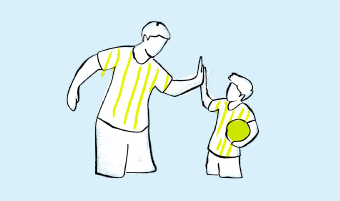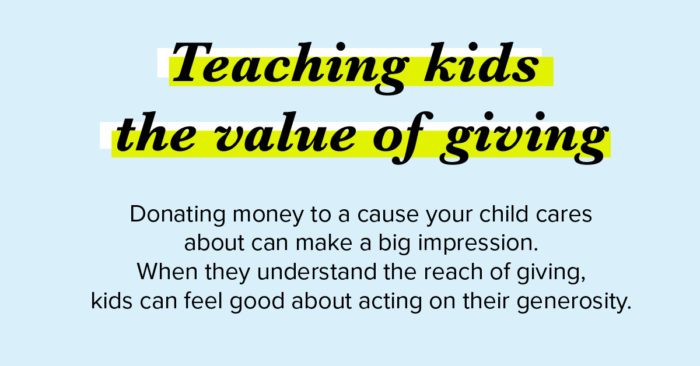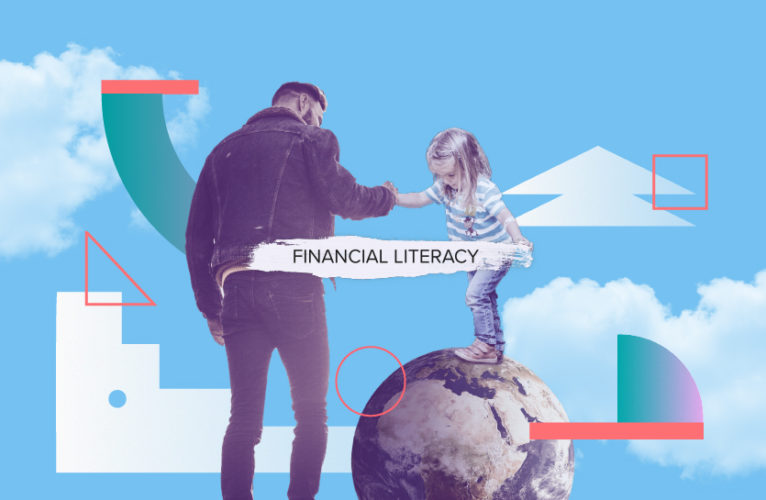Teaching your kids the value of giving
September 13, 2021
8 min read
Parents should start talking to their children about money as soon as young ones can understand it. You may be surprised to know that this can be as early as 2 or 3 years old. When teaching your kids financial literacy, it’s important to also include the notion of charity.
Understanding the power of giving can help children better grasp the concept of money. For example, you can show children how small amounts of money donated by many people can build a school in a country thousands of kilometres away. Or, how giving can provide essential educational tools for children who may not be able to afford them.
An allowance of $5 can be spent on a few chocolate bars or a small toy. But donating that money to a cause your child cares about can make a much bigger impression. When they understand the reach of giving, they can feel good about acting on their generosity.
Financial lessons are different depending on age and level of experience. We are sharing some tips here on how to teach your kids about the power of giving at every stage of childhood.
From the cradle: Birth to 5 years
Creating an environment that includes giving is important right from the beginning. To instill values of giving teach young children by doing rather than telling. For example, ask your kids to shop for fun toys they want to give away so they can later drop items off for a toy drive.
When donating used items like your child’s outgrown toys or clothing, make them part of the process of selecting, packing, and distributing. Or, spend a weekend with your little one handing out essential items to organizations helping marginalized people.
According to the Social Learning Theory, children can learn behaviour by watching. In the famous 1961 Bobo doll experiment, researchers discovered that, after watching, children mirrored how adults treated a doll.
This might also be a good time to encourage a positive mindset around money and generosity. If adults show their charitable side and model that behaviour, children will also learn the virtues of giving. Simply by observing.

School-age lessons: Ages 5 to 10
After a child turns 5, they often understand the concept of money—like that in order to get things you have to buy them. Parents can teach by comparing the cost of an item to how much a child could donate to a cause.
You can introduce kiddos to different charities to show how any size of donation can go a long way in helping people. If your child received gifted money on their birthday or a holiday, you can approach them about giving some to a cause they want to support. It could be at their school, a cause they hear of through friends, or something they saw on social media. Make sure it’s their decision where the money goes and that they see how it helps others.
You could also consider creating a charitable allowance for your child. This could be managed by creating an Impact Account where you can add money on their behalf each month or by setting up a family Giving Group. Children can choose where they would like to give from any of the more than 86K Canadian registered charities.
These actions build their foundation of what giving and donating entails, while teaching children how joyful and rewarding it can feel.

Early teen years: 10 to 15
During the preteen and early teen years, your kids may get their first job and start making a bit of their own money. This is a great time to show them how they should save and spend.
In one approach, half can be saved towards a bigger goal and a little less than half can be spent on their wants, like going out with friends and buying things they like. If possible, 5% could be set aside for giving. Kids can save this money over a few months and donate once they have achieved a larger sum, or give continuously as they earn.
Establishing this habit early makes it more likely kids will keep it up in adulthood. Directing a portion for helping others can be a powerful and positive experience for young people. And it encourages seeing a paycheque as an opportunity to think holistically about finances.
Your tween and teen may be interested in not only donating their money but also their time. At this age, children could even reach out to charities on their own to learn more about an organization’s needs and opportunities to help out in any way.

Entering adulthood: 15 years and older
By this time, your kids may already be familiar with what charitable giving is and how the experience benefits them. (If not, it’s never too late to start learning!) Now, it’s about finding what causes they’re most passionate about. That could be fighting climate change, finding a cure for a disease, helping the homeless, or coaching underprivileged children in a sport.
If your child has a special interest and skill, getting them to focus their efforts will help them see the full value of their donations of time and money.
As they head off into adulthood, they will be well equipped to help in the best way possible. All the efforts made in teaching a child about the value of giving will carry them through their lifetime.

Linking giving to financial literacy—at any age
Giving is a powerful emotion. It makes us feel good and gives us something to strive towards. Through volunteering efforts, young people are more likely to meet people from all walks of life. They may encounter and learn from individuals they otherwise wouldn’t have.
They are also learning more hard skills, applicable in other areas of their lives. Teaching young people about giving teaches them how to manage their money. Financial literacy is paramount when raising children and preparing them for the bigger world.
The federal government has mandated financial literacy curriculum and provincial governments are implementing various programs. In Ontario, financial literacy is now part of primary school lessons and high school math curriculum. Secondary students learn about filing taxes and financial planning strategies.
As parents, it’s good to keep in mind that a big part of financial literacy is understanding social responsibility. Giving together as a family can help build bonds and forge stronger relationships while imparting knowledge in generosity and empathy.
These are experiences that your children can keep with them. When they act on their generosity at any age, they will gain value from the many benefits.
This is a guest post from Rubina Ahmed-Haq, journalist and personal finance expert. Rubina regularly appears on TV and radio across Canada and writes for several online and magazine publications, including CBC Radio and Television, Global News Toronto, and Global News Radio 640 Toronto. She writes regular columns for several magazines and has her own website: www.RubinaAhmedHaq.com
Rubina began her career as a broadcast journalist in 1999.
Follow her on Twitter: @RubinaAhmedHaq



